Scotland Performs Update
Scottish Government performance information
Education and Skills Committee
Scorecard
The following National Performance Framework indicators have been selected as relevant to the Education and Skills Committee for the purposes of the Draft Budget Consultation Period.
The report overleaf shows recent performance on these indicators as at 14 December 2017.
The hyperlinks take you to the Scotland Performs website for the latest information on each indicator.
Performance Improving
To rank in the top quartile for productivity against key trading partners in the OECD by 2017
Increase real terms productivity in Scotland
Improve knowledge exchange from university research
Improve children’s services
Widen use of the internet
Performance Maintaining
Increase research and development spending
Reduce underemployment
Increase the proportion of pre-school centres receiving positive inspection reports
Increase the proportion of schools receiving positive inspection reports
Increase the proportion of young people in learning, training or work
Increase the proportion of graduates in positive destinations
Improve people’s perceptions of the quality of public services
Reduce children’s deprivation
Performance Worsening
Improve the skill profile of the population
Improve levels of educational attainment
Reduce the proportion of individuals living in poverty
Performance Improving

Scotland's productivity rank remained at 19 out of 36 countries between 2011 and 2014, at the top of the third quartile. In 2015, the rank rose to 16 out of 36.
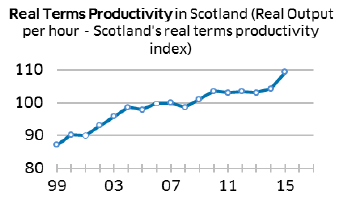
Scotland’s productivity increased by 3.5% in real terms during 2015. It is now 9.4% higher than the pre-recession level in 2007.
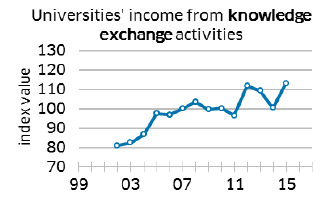
Universities’ income from knowledge exchange ( KE) increased in 2015-16. Fluctuations over time, however, suggest that we should not read too much into one year’s change in the index as some of the components can be quite volatile.
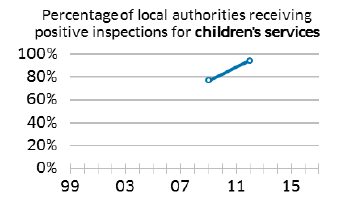
More local authorities received positive evaluations in child protection inspections in the latest period (2009-2012) than in the previous period (2006-2009).
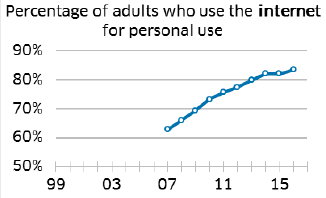
The percentage of adults using the internet for personal use increased in 2016, following a steep upward trend.
Performance Maintaining
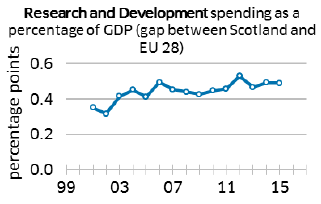
The gap between Scotland and the average EU nations R&D expenditure has widened – since 2001, expenditure in the rest of the EU has increased at a higher rate than that in Scotland.
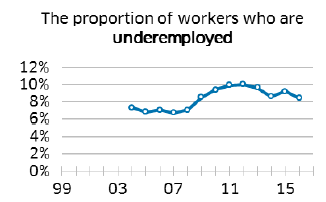
The proportion of workers who are underemployed remained stable between 2015 and 2016, following a declining trend since the peak in 2012. The upward trend in earlier years was due to the recession in 2008.
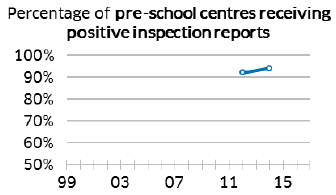
The first post-baseline sample shows that the same high percentages of pre-school centres received positive inspection reports as in the baseline year.
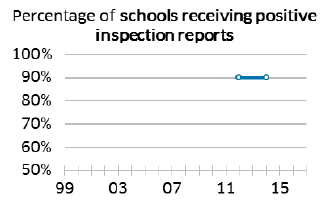
The first post-baseline sample shows that the same high percentages of schools received positive inspection reports as in the baseline year.
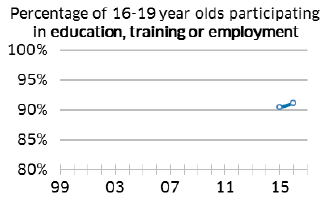
The percentage of 16-19 year olds participating in education, training or employment increased between 2015/16 and 2016/17.
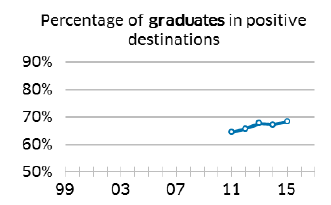
The proportion of graduates in positive destinations remained stable between 2014/15 and 2015/16.
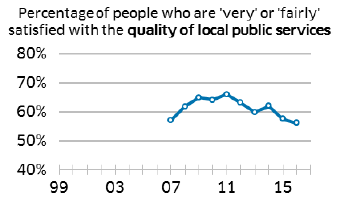
The percentage of people who are 'very' or 'fairly' satisfied with local public services remained stable between 2015 and 2016, having decreased since 2011.
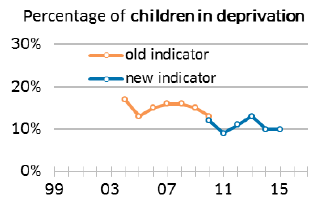
The percentage of children living in material deprivation remained stable between 2014/15 and 2015/16. In 2010/11, there was a change to the questions asked in the survey.
Performance Worsening
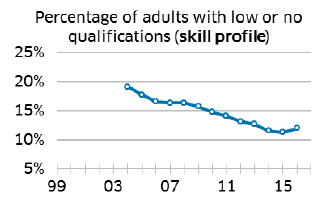
The percentage of the working age population with low or no qualifications has steadily declined since 2004, despite the increase in 2016.
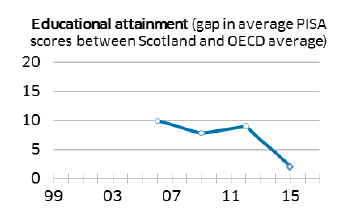
Scotland's educational performance has fallen to 2 points above the OECD average in 2015. This is due to declines in Scottish performance in Science and Reading.
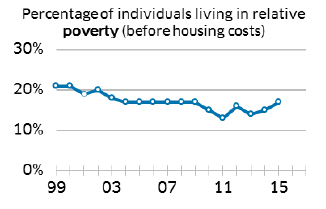
The proportion of people living in relative poverty increased in 2015/16 and has fluctuated since 2009/10.
Contact
There is a problem
Thanks for your feedback